Case study on structuring an artificial intelligence platform for legal petitions
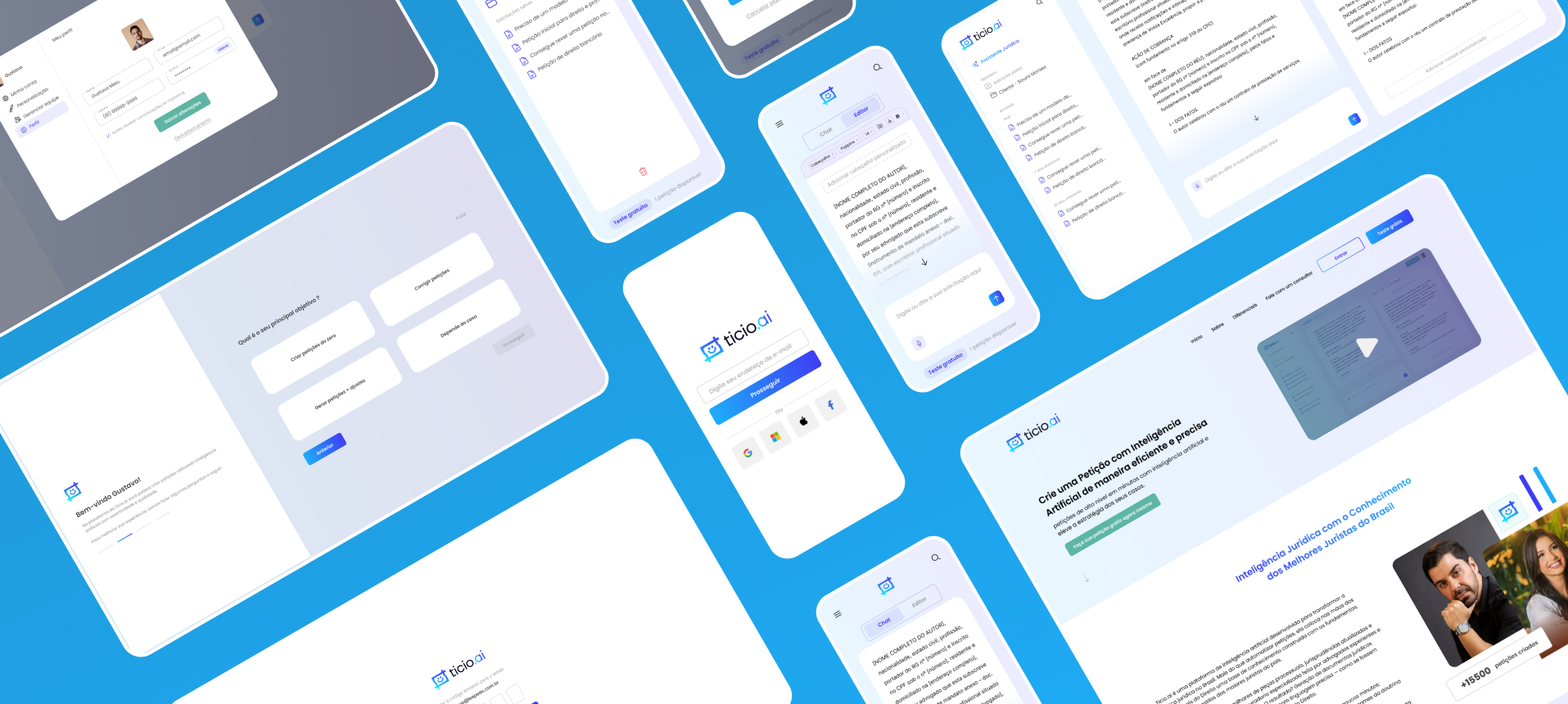
- CompanyLeap Educação
- RoleProduct Designer
- Duration1 month
- Responsibilities
- Market analysis
- Research
- Users mapping
- User flows
- Prototyping
- Collaborate with developers
We are living in a new era in Law, driven by the accelerated advancement of artificial intelligence. Repetitive and operational tasks that previously consumed hours of legal work can now be automated with precision, speed and reliability — opening space for lawyers to focus on what really matters: strategy, critical thinking and decision making.
Web platform focused on generating personalized legal petitions based on specific case data, using artificial intelligence to optimize time and reduce errors.
Understanding the problem
The context
Legal systems organize the application of law, varying in basis, which can be civil law (codified law, typical of Brazil, continental Europe) or common law (jurisprudence prevails, typical of USA, United Kingdom). In Brazil, the system is based on civil law, with a strong focus on written codes and norms, where the judicial process is documentary and formal.
Petitions are initial or intermediate procedural documents that formalize requests to the Judiciary. Examples: initial petition (for process initiation), intermediate petition (to express oneself in the process), appeals, manifestations, etc. They are the main form of communication between lawyers and the Judiciary, and their correct drafting is essential for the processing and decision of processes.
Current scenario
Volume of Petitions: According to data from CNJ (National Council of Justice) and TRT (Regional Labor Court), Brazil processes millions of annual cases, and each case can contain several petitions. For example, CNJ reports that in 2023, the Brazilian Judiciary recorded more than 20 million active cases, with an estimate of tens of millions of petitions filed annually.
Costs and Time: Most costs and delays in the Judiciary are linked to the volume and complexity of petitions. Studies indicate that poorly drafted petitions generate dismissals, rework, and delays. A poorly founded petition can increase judgment time by weeks or months.
Digitalization and Electronic Process: The implementation of PJe (Electronic Judicial Process) has increased speed and control over petitions, but also generated high demand for software capable of managing large document volume.
Identified opportunity
Given the scenario faced and the rise of artificial intelligences, we have possible problems to be solved:
- Generate personalized petitions based on specific case information;
- Reduction in preparation time (from days to hours/minutes);
- Reduction of human errors;
- Time optimization for strategic lawyer activities;
- Greater efficiency in managing large document volume;
Desk research
Use of Artificial Intelligence (AI) in Law and Petitions
AI Landscape in Law:AI has been applied to optimize document analysis, jurisprudence research, predictive analysis of decisions, contract review, and automation of legal documents. Tools like IBM Watson Legal, Luminance, and local startups focus on the digital transformation of law.
AI in Petitions:Automation of drafting: Platforms use AI to generate petition drafts based on data and legal models. Ex: Brazilian legal techs like JusBrasil and Neoway have solutions for this. Analysis and review: AI can review petitions, detecting inconsistencies, formal errors and weak legal points, reducing risk of dismissal. Research and jurisprudence: AI legal assistants help lawyers find relevant precedents to support petitions. Outcome prediction: Predictive analysis can guide the best strategy for petitions, indicating success chances.
Data and Studies:Data and Studies: According to Thomson Reuters research, 64% of large law firms already use some type of AI to optimize repetitive tasks. In Brazil, research indicates 20-30% annual growth in the use of legal techs that use AI for document automation.
Challenges and Limitations
Cultural Adaptation:Initial resistance of legal operators to AI adoption.
Regulation: Ethical use of AI, data privacy, legal responsibility for errors generated by automated systems.
Data Quality and Training: AI depends on well-structured and updated databases to function correctly.
Sources and References
- - CNJ — Relatórios estatísticos anuais do Poder Judiciário (disponível em: cnj.jus.br);
- - Thomson Reuters — Legal Tech Report 2023;
- - Pesquisa FGV/Direito Rio sobre IA e Direito;
- - Relatórios de startups brasileiras de legal tech (ex: JusBrasil, Neoway);
- - "Impacto da inteligência artificial na prática jurídica" (Revista de Direito e Tecnologia, 2024);
- - IBM Watson Legal Overview;
- - Dados públicos do Tribunal Regional do Trabalho (TRT);
Competitive benchmarking
Through competitive benchmarking, it was possible to analyze the main artificial intelligence platforms focused on Law and petitions, which are:
Cria.AI
Presents itself as Brazil's first legal AI, focused on productivity and precision in creating legal documents.
Promises 70% to 80% time savings in drafting procedural documents, contracts and notifications, allowing lawyers to focus on more profitable tasks.
- - Generation of legal documents in seconds;
- - Intuitive interface to facilitate use by legal professionals.;
- - Focus on security and exclusive technology for the legal sector;
- - Developed from practical needs observed in law firms;
- - Emphasis on productivity and precision in creating legal documents;
Jurídico AI
AI platform specialized for lawyers, focused on drafting procedural documents and legal research.
Promises complete legal document drafting in less than a minute, using advanced algorithms and natural language processing specifically trained on Brazilian legal data.
- - Generation of various procedural documents, such as initial petitions, defenses, appeals and writs of mandamus;
- - Analysis of jurisprudence and doctrine for document foundation;
- - Complete and personalized editing of documents directly on the platform;
- - AI trained exclusively with national legal system content, ensuring understanding of technical terms and legislative updates;
- - Avoids common errors, such as citing non-existent jurisprudence and generic narratives.;
- - Offers specific functionalities for different types of procedural documents, with exclusive fields for detailed qualification of parties and legal foundation.;
JurisAI
Legal assistant with AI integrated into Brazilian legislation.
- - Drafting of petitions, contracts and legal analyses;
- - Transcription and analysis of hearing audios;
- - Analysis of PDF documents with identification of legal contradictions;
- - Emphasis on security and privacy of user data;
Redizz
360° platform for independent lawyers and small law firms.
- - Generation of petitions, defenses, appeals and replies with AI;
- - Legal analysis, jurisprudence research and legal calculators;
- - Digital signer and legal article generator;
- - Document personalization with law firm logo and integration of multiple functionalities in a single platform.;
Quantitative research
A survey was conducted by the team involved in the project. Analyzing the results, the following points stand out:
- of people use some type of template for creating petitions
- 78%
- of people have already used artificial intelligence to create petitions
- 57,7%%
- of people would use a petition creation tool several times a week
- 65%
Analyzing results
The impact on society
Petition automation platforms, like Ticio.ai, are transforming the legal sector and generating relevant social impacts:
Access to Justice:Making legal production faster and cheaper allows more people, especially low-income people, to have access to quality legal services.
Judiciary Agility:Well-structured documents with fewer errors reduce rework and contribute to unclogging the judicial system, making processes faster.
New role for the lawyer:By automating repetitive tasks, the lawyer can focus on strategy, analysis and client relationship, elevating the value of their work.
Education innovation:These tools also help better train Law students, focusing on real practice and correct structuring of documents.
Responsibility and ethics:It is essential to ensure that technology is used with transparency, human supervision and respect for legal principles to avoid abuses or automated errors.
Legal automation can expand access to Justice and improve the efficiency of Law in Brazil, as long as it is used responsibly and focused on social impact.
Mapping users
From the data collected in the research, personas and a user journey map were developed, with the objective of identifying opportunities and directing the next stages of the process:
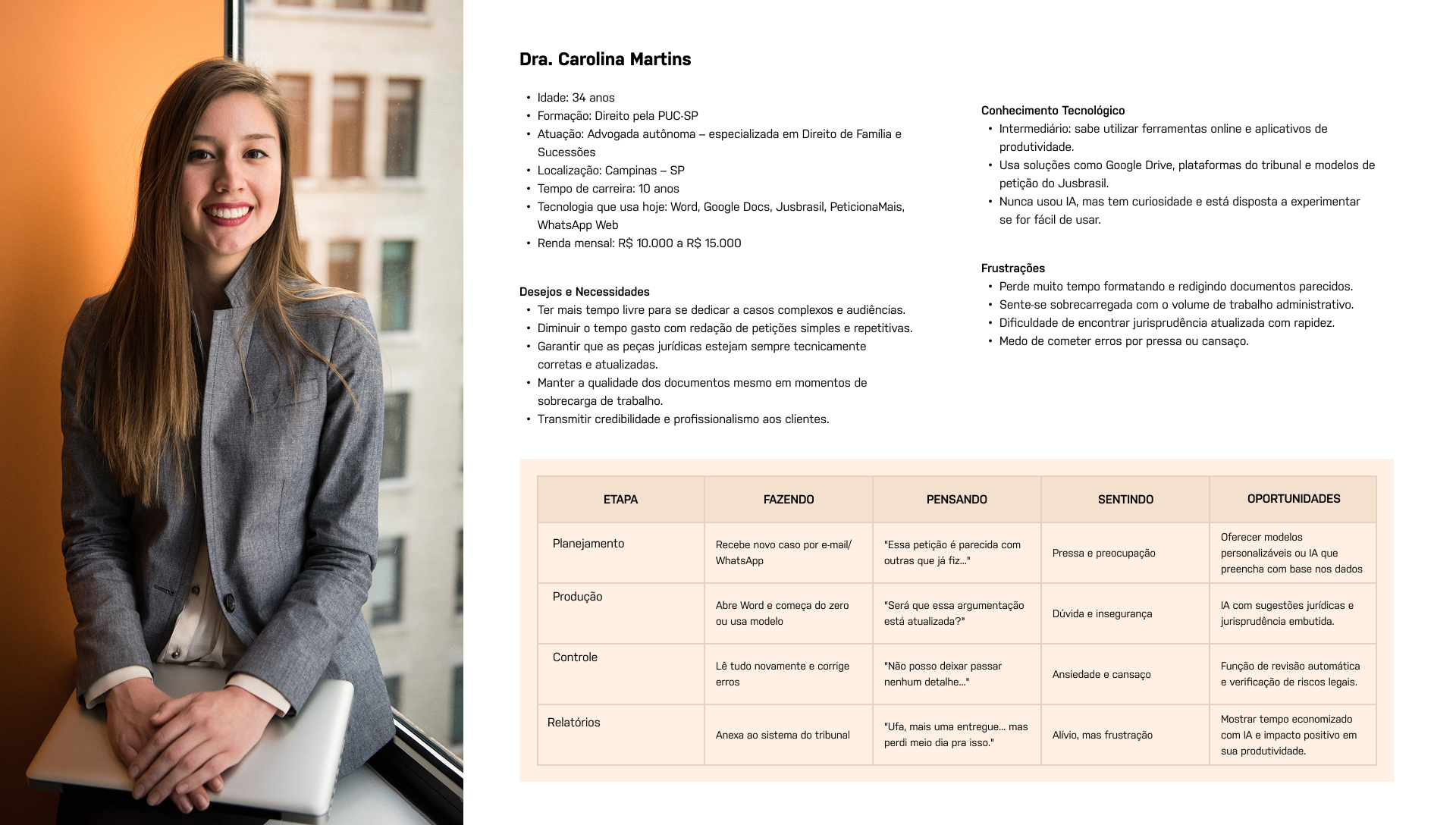
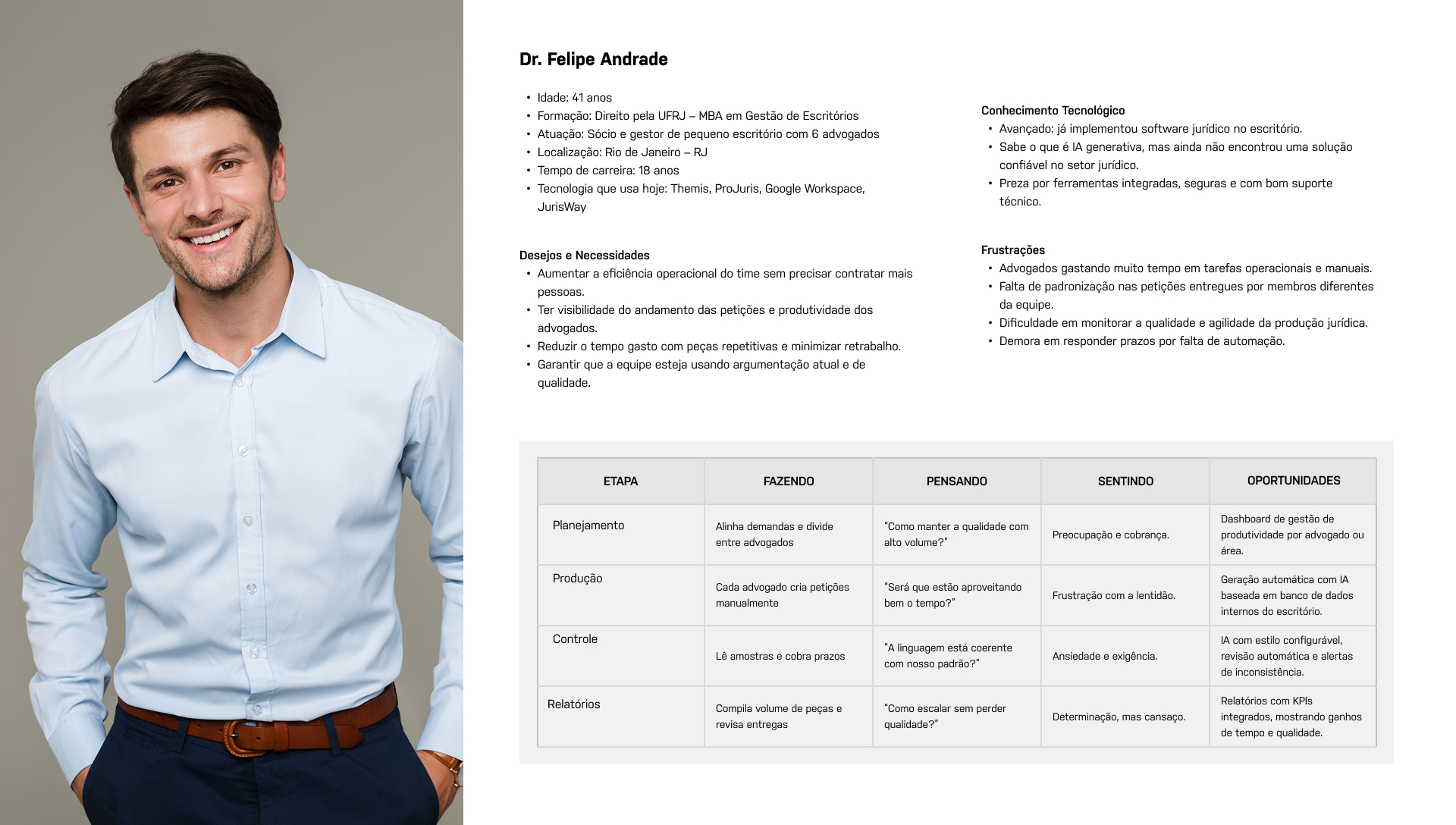
Idealizing the solution
Brainstorming
Using unstructured brainstorming, possible points to be considered in idealizing the solution for the previously identified problems were raised:
- Facilitate collaboration between team members;
- Track the history of each created petition;
- Save and organize templates and documents;
After brainstorming, it was possible to identify that the solution should be a responsive web platform. Creating an app in the initial version would not be viable due to the complexity of the project and limited time for development.
Mind map
The practice was used to organize the solution structure in a faster and more efficient way:
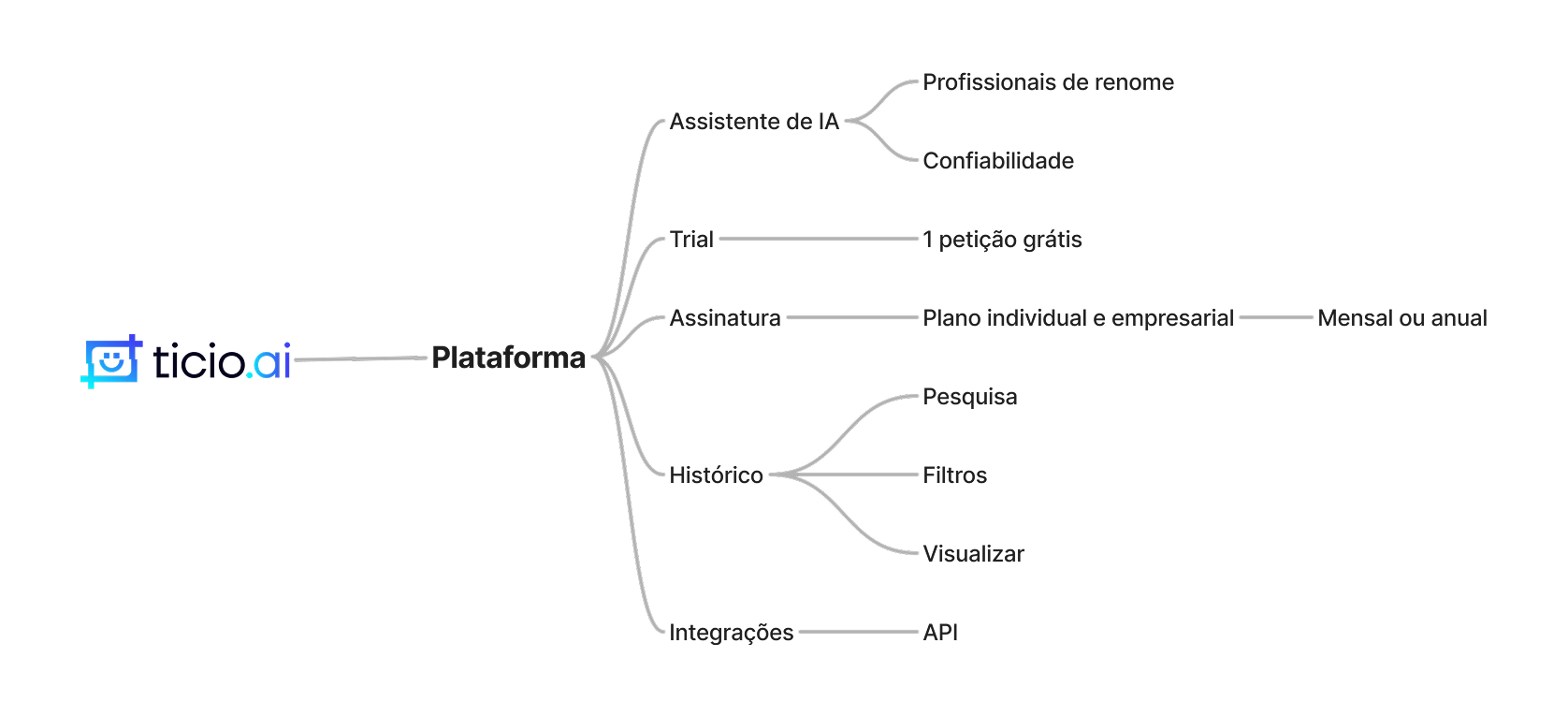
User flow
After the mapping and organization created in the Mind map, at this stage the user navigation flowchart was created:
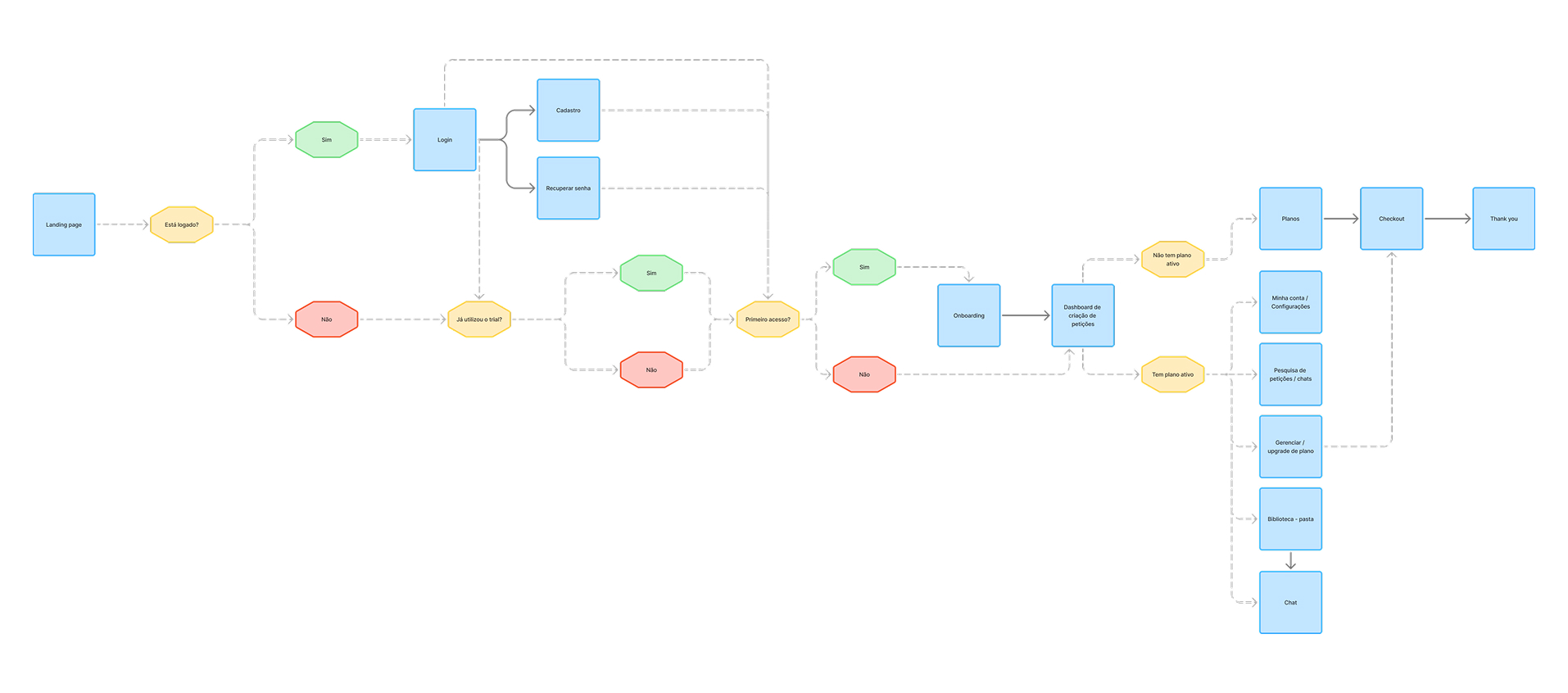
Low fidelity prototype
With the flow defined, the prototyping stage was initiated. At this first moment, low fidelity screens were created, allowing rapid validation of initial ideas and concept adjustment before advancing to more detailed versions.










Usability tests
Some usability tests were executed on the low fidelity prototype, from which some flow and writing errors were observed. Subsequently corrected in the high fidelity prototype.
Test planning:
- Definition of activities to be tested;
- Recruitment of users who resembled the personas;
- Creation of the script detailing what would be the "success" of the selected activities for testing.
Metrics analyzed in the tests:
- Completion rate;
- Complexity rate;
- Execution time
Moodboard
To contextualize the entire visual identity of the application, a board was created to be followed as an aesthetic/visual model for creating the styleguide.
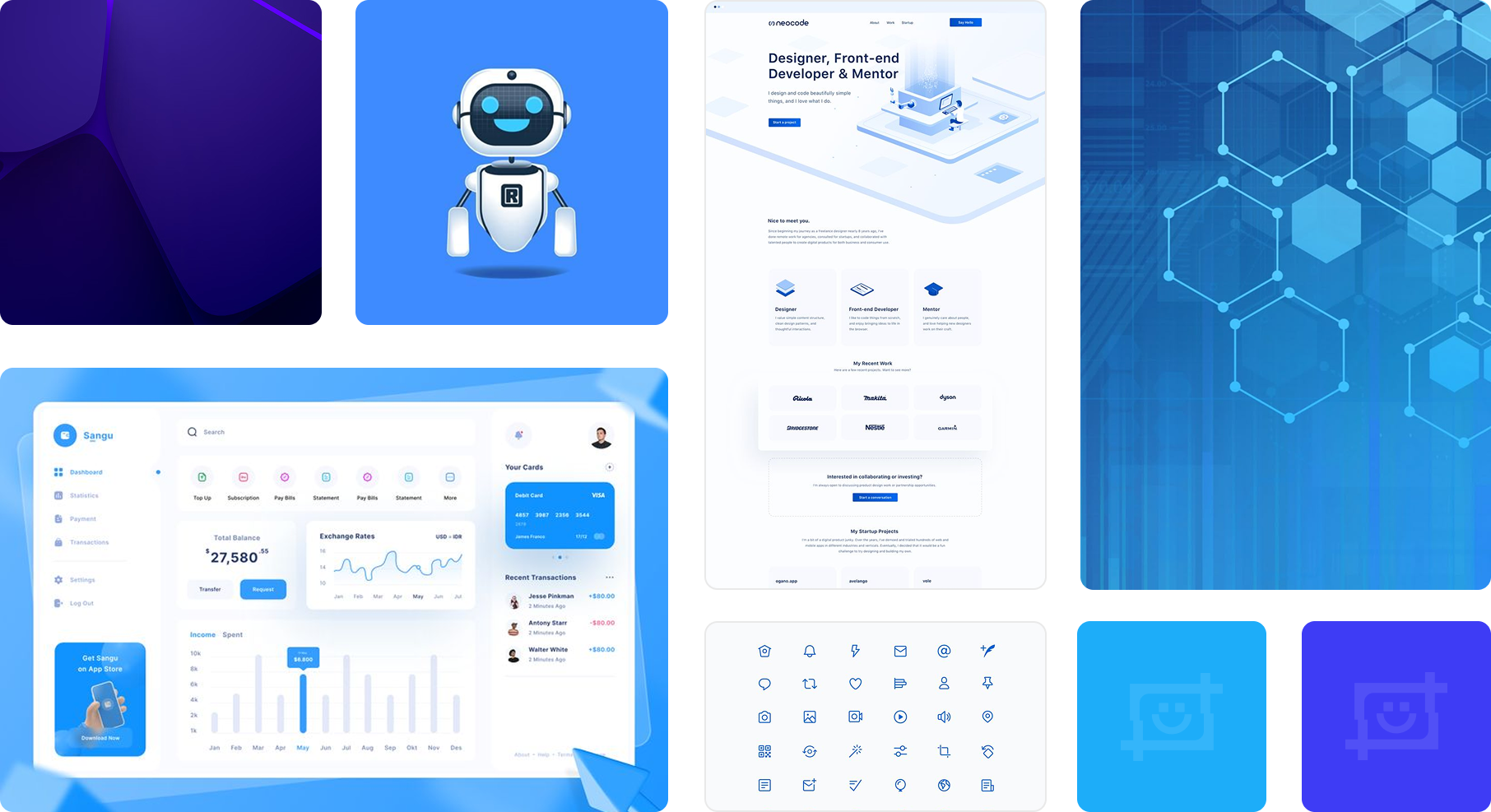
UI Kit
To contextualize the entire visual identity of the application, a board was created to be followed as an aesthetic/visual model for creating the UI Kit.
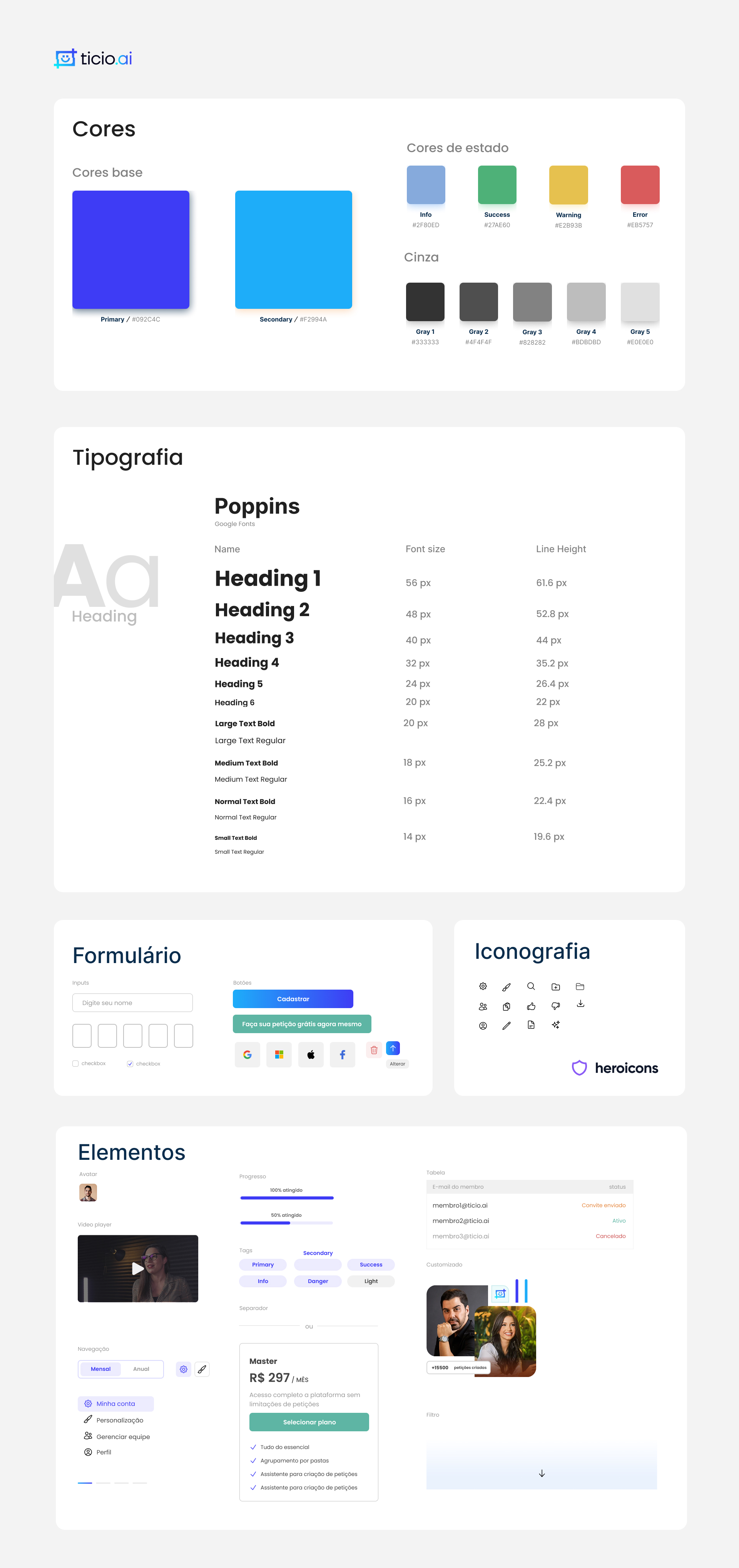
High fidelity prototype
Taking into consideration the design system and insights from usability tests, it was possible to structure the high fidelity prototype:
Mobile:













Desktop:














Conclusion and learnings
Throughout the project, we mapped real automation opportunities, deepened understanding of lawyers' and legal teams' pain points, and transformed this knowledge into a functional, accessible platform with high added value.
Legal automation has growing space, but still requires market education for broad and conscious adoption.
The integration between AI and traditional legal knowledge is not about replacing the lawyer, but rather expanding their productive capacity.
The user experience needs to be fluid, even when dealing with a technical and sensitive topic like Law.
Next project
Case study on structuring an e-commerce platform for selling courses and subscriptions in the legal area and public competitions
